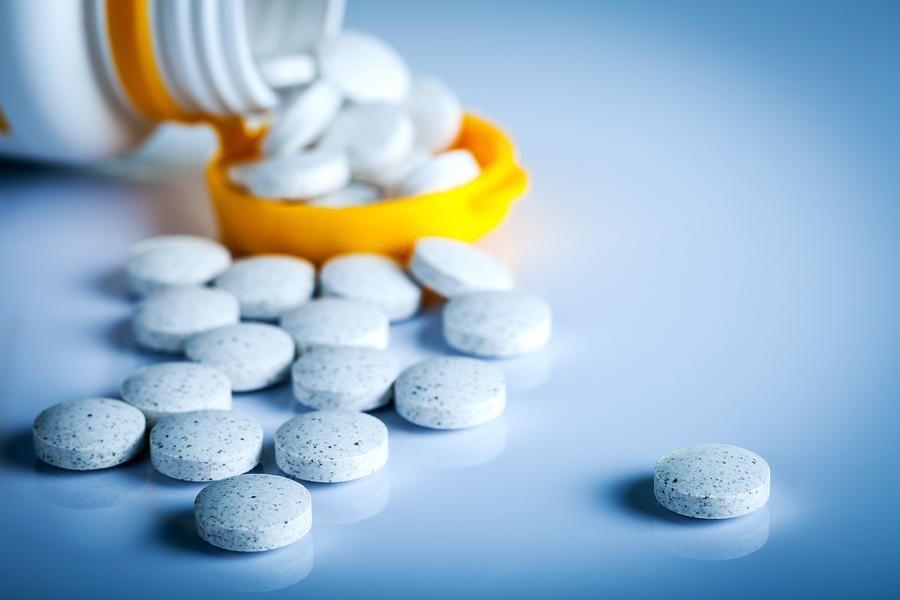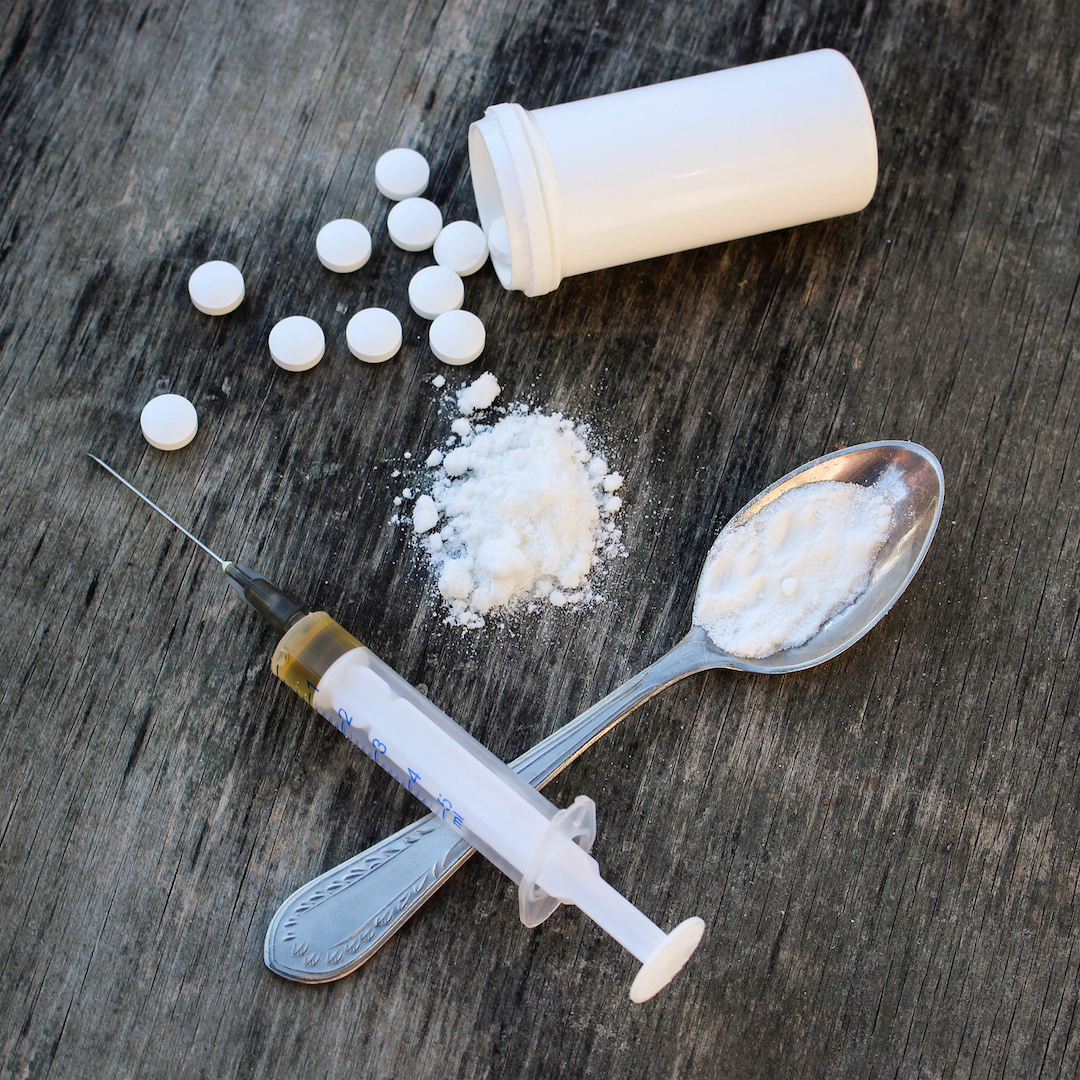 Tramadol is an opioid painkiller prescribed for moderate to more severe pain, available in brand-name formulations like ConZip, Rybix ODT, Ryzolt, Ultram, and Ultram ER. It is also available in the combination product Ultracet, which contains acetaminophen in addition to tramadol.
Tramadol is an opioid painkiller prescribed for moderate to more severe pain, available in brand-name formulations like ConZip, Rybix ODT, Ryzolt, Ultram, and Ultram ER. It is also available in the combination product Ultracet, which contains acetaminophen in addition to tramadol.
Opioid drugs are regularly abused around the world. Within the United States, more than 4 million American adults (aged 12 and older) were considered to be current abusers of prescription opioid pain relievers at the time of the 2014 National Survey on Drug Use and Health (NSDUH). Opioid drugs decrease some of the activity of the central nervous system, dulling pain, slowing heart rate, lowering blood pressure and body temperature, and decreasing respiration rates. These drugs also make individuals feel mellow and relaxed, and can also produce a euphoric “high.”
Opioid drugs act on the opioid receptors in the brain and body, causing some of the brain’s natural messengers, or neurotransmitters, like dopamine and serotonin to flood the system. These are some of the chemical messengers that tell a person to feel happy. When high levels are present, that “high” feeling can be produced. Tramadol not only has a traditional opioid effect, but it also acts like some antidepressant medications by working to prevent the reuptake of both serotonin and norepinephrine, the journal Psychiatry publishes.
Abuse of Tramadol
In the past, tramadol may have been touted as an opioid drug with fewer side effects than other traditional opioids, such as having a lower potential for abuse and diversion. Tramadol may even have been prescribed to ease opioid withdrawal for individuals who were opioid-dependent. Tramadol abuse has been on the rise, however, and the Drug Enforcement Administration (DEA) states that individuals who have chronic pain, those who suffer from addiction to other opioid narcotics, and health professionals who potentially have easy access to divert tramadol are the most likely to abuse the drug.
Individuals who are taking an opioid antagonist to maintain sobriety as part of an opioid abuse treatment program may abuse tramadol, as the drug can still produce a high even with an opioid antagonist blocking receptors, Psych Central reports. This may be further evidence of tramadol working differently from other opioid drugs. In the Middle East, tramadol may be abused as a stress reliever for those in poor living situations, as it may be readily available and cheap. Among Egyptian youth, tramadol may be abused as a sexual performance enhancer, The Egyptian Journal of Forensic Sciences publishes.
In 2014, the DEA placed tramadol into Schedule IV as a controlled substance due to its potential for abuse and dependence. The US Food and Drug Administration (FDA) places warnings in the drug data on tramadol-containing drugs like Ultram regarding its abuse potential. Abusing tramadol can have disastrous consequences, from overdose to dependence and addiction.
Recognizing Tramadol Abuse
Tramadol may be abused in many ways. Simply taking the drug after a legitimate prescription has run out, taking more of the drug at one time than prescribed, or any use of tramadol that is beyond its medical necessity is considered to be drug abuse. Individuals may “shop” different doctors to try and get one or more prescriptions, or invent pain symptoms to get tramadol when it isn’t really needed for medical purposes.
Tramadol may be swallowed in pill form, chewed, or crushed to be snorted, smoked, or injected for recreational use. When the tablet of one of the extended-release (ER) formulations of tramadol is altered by chewing or crushing, it sends all of the drug into the bloodstream at once instead of a little bit at a time as the drug was meant to be dispersed. This can potentially lead to overdose.
An overdose on tramadol may differ from overdoses on other opioids in that it doesn’t usually cause respiratory distress, although difficulties with breathing may still occur with high levels of the drug. Similarly to other opioids, nausea, dizziness, mood swings, and constipation are all common side effects of tramadol abuse. In high doses, tramadol may cause seizures, high body temperature, delirium, and muscle pain and rigidity that is often associated with serotonin syndrome; this can be more common if tramadol is mixed with other monoamine oxidase inhibitors (MAOs) or selective serotonin reuptake inhibitors (SSRIs), the DEA reports. The Drug Abuse Warning Network (DAWN) reports that in 2011, approximately 20,000 people sought treatment at an emergency department (ED) for a negative reaction to the nonmedical use of a tramadol product.
Tramadol intoxication may appear similar to that of other opioid narcotics, as the individual may appear mellow, sedated, and euphoric. Tramadol impairs judgment and may lead people to take bigger risks or put themselves into potentially dangerous situations. Individuals may behave out of character while taking tramadol, engaging in risky sexual encounters or even criminal activities.
Over time, and with regular use, individuals can develop a tolerance to tramadol, meaning that they will have to keep taking more of the drug in order to keep feeling the same effects. Increasing the dosage and taking more tramadol can lead to chemical dependence on the drug. Dependence on tramadol can be formed even with legitimate use of it, as the drug is considered to be habit-forming when taken for a long period of time. Once dependence has been created, withdrawal symptoms may occur when the drug leaves the bloodstream.
Opioid withdrawal syndrome can be significant, and individuals may experience drug cravings and a desire to keep using tramadol to avoid these symptoms. Dependence can lead to compulsive drug-seeking and drug abuse patterns that may be signs of addiction.
Signs of Tramadol Addiction

Addiction is considered a disease that involves some of the chemical pathways in the brain that are involved in feeling pleasure, regulating emotions, and overall motivation. When someone does something that makes them happy, chemical messengers in the brain are released. These neurotransmitters, like dopamine and serotonin, move along pathways in the brain and central nervous system, making the person feel good. Naturally, they will want to repeat this action in order to reproduce these feelings, thus influencing the reward pathways and motivation levels.
Drugs like tramadol interfere with this natural process by filling opioid receptors in the brain and creating a backlog of these feel-good chemical messengers. When tramadol is used regularly, it can create a shortcut in the reward pathways in the brain, and levels of some of the naturally occurring neurotransmitters may not be produced or moved throughout the central nervous system in normal amounts anymore. The brain may instead rely on tramadol to influence its reward circuitry. As a chemical dependence develops, people may have difficulties feeling pleasure or regulating moods without the drug. Individuals may no longer be able to control their use of tramadol, which is the hallmark of addiction.
Almost 2 million Americans who were at least 12 years old in 2014 battled an opioid use disorder, per NSDUH. Someone who suffers from an opioid use disorder involving tramadol has probably tried to stop taking the drug at least once and not been able to. They may take more of the drug at one time than they intended and take it for longer periods of time than intended. Mood swings and changes in eating and sleeping habits are common signs of tramadol addiction. Individuals may lose interest in activities or social situations that may have been important to them before, and they may withdraw and appear secretive and isolated. Grades in school may drop, or they may begin to miss work and be less productive there. Familial obligations may be overlooked.
Individuals who struggle with addiction may continue to use tramadol regardless of the negative consequences. Risk-taking behaviors and the use of tramadol in potentially hazardous situations may be common. Obtaining tramadol, using it, and recovering from the drug may become the center of the person’s world. Relationships, physical and emotional health, and finances may suffer as a result.
Getting Help for Tramadol Abuse, Dependency, and Addiction
Because of the potentially intense nature of the withdrawal symptoms from tramadol, people are encouraged to seek help when attempting to stop taking the drug. Medical detox, which offers around-the-clock support and medical care while helping to manage opioid withdrawal syndrome, is recommended.

Medical detox may employ the use of medications to minimize withdrawal symptoms. Methadone and buprenorphine, for example, are medications that are approved by the FDA to treat opioid dependence and can help to lower the severity of opioid withdrawal. These medications work on opioid receptors in the brain and can be slowly lowered, or tapered off, over a period of time to keep withdrawal symptoms to a minimum. Tramadol should not be stopped suddenly, or “cold turkey.” Instead, it can be replaced with a longer-acting and less potent opioid or slowly weaned off during medical detox.
Detox should be part of a complete substance abuse treatment program that will also include either a residential or an outpatient care plan. Outpatient programs are generally flexible with a person’s life obligations, and individuals return home each evening to sleep. In a residential program, the individual stays onsite for a period of time. The person is able to take advantage of both traditional and holistic therapies as well as benefit from a structured and stable environment that can help to build a strong foundation for recovery.
Both residential and outpatient programs may focus on helping individuals to change the way they think in order to influence their actions through Cognitive Behavioral Therapy, or CBT. Group and individual therapy sessions are vital parts of CBT, wherein individuals learn new ways to manage stress and cope with potential triggers to avoid future relapse.
Any potential mental health issues should also be addressed during a substance abuse treatment program through integrated treatment methods for co-occurring disorders. Over half of all individuals who abuse drugs also suffer from mental illness, the National Alliance on Mental Illness (NAMI) publishes. A dual diagnosis is often addressed with both therapeutic and pharmaceutical methods. Recovery is also enhanced with the aid of peer support, or 12-Step programs, as well as aftercare services and relapse prevention tools.
